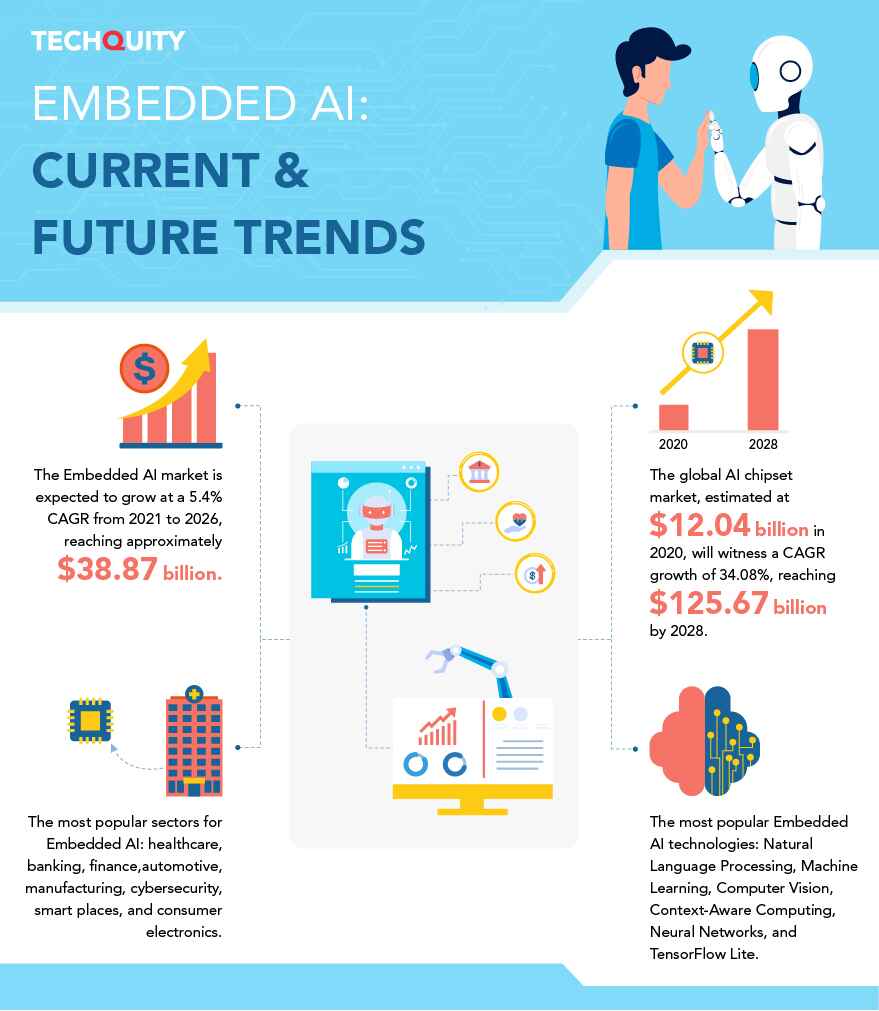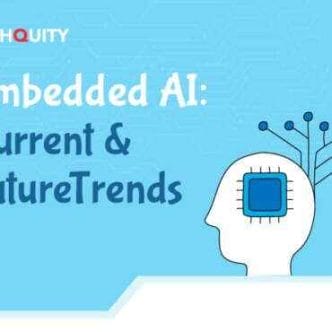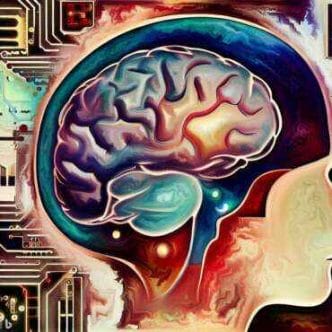Embedded AI (also known as Edge AI or TinyML) is the integration of artificial intelligence (AI) directly into devices that often have limited processing power or resources. Think smartwatches, home appliances, self-driving cars, and even tiny sensors.
How Embedded AI is Different:
-
Traditional AI in the Cloud: Most AI we’re familiar with involves sending data to powerful servers in the cloud (think data centers) for processing. These servers analyze the data, make predictions, and send the results back to your device.
-
Embedded AI on the Device: Embedded AI puts AI capabilities directly onto the device itself. This means the device can analyze data and make decisions without needing to rely on a constant internet connection.
Why Embedded AI Matters:
- Faster Decisions: Embedded AI processes data where it’s generated, reducing the time it takes to get insights and act upon them.
- Privacy and Security: Processing data locally helps keep potentially sensitive information away from cloud storage, enhancing privacy.
- Lower Costs: Reduced reliance on sending data to the cloud can save energy and bandwidth costs.
- Works with Limited Connectivity: Embedded AI devices can continue to make smart decisions even in locations with low or no internet connectivity.
Examples of Embedded AI:
- Smartwatches: Smartwatches use embedded AI to track fitness data, recognize voice commands, and even analyze health metrics.
- Smart Speakers: Devices like Amazon Echo or Google Home use embedded AI to process your voice requests and control smart home devices.
- Industrial Robots: Embedded AI enhances robots on manufacturing lines, allowing them to adapt to changes and work more efficiently.
Embedded AI is opening up new possibilities. It’s making our devices smarter, more responsive, and capable of functioning in situations where cloud-based AI might not be practical.















